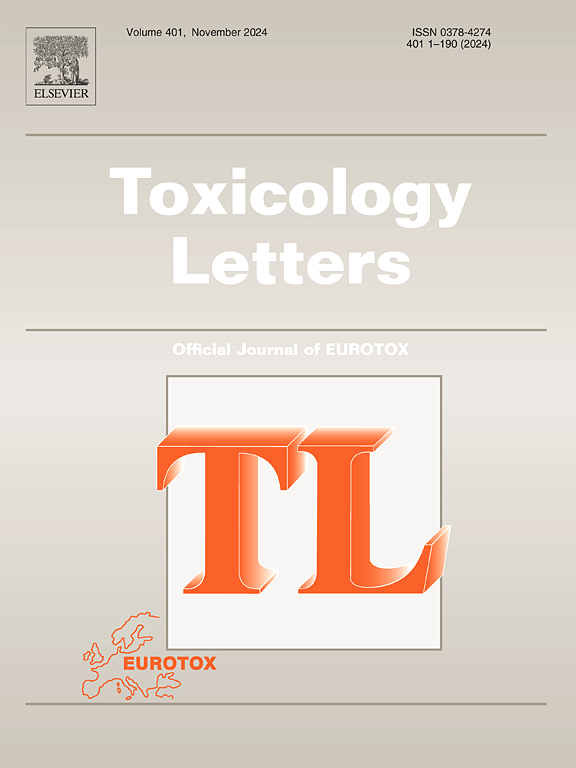产前暴露微囊藻毒素lr可改变后代小鼠胰腺蛋白质组和胰岛素分泌
IF 2.9
3区 医学
Q2 TOXICOLOGY
引用次数: 0
摘要
本研究探讨了微囊藻毒素- lr (MC-LR),一种蓝藻毒素,在母体暴露于小鼠后代胰腺β细胞后对葡萄糖代谢的毒性作用。雌性小鼠暴露于不同浓度的MC-LR 12周和妊娠期。虽然在母亲身上没有发现不良反应,但新生儿表现出明显的低血糖水平,并持续到青春期,同时空腹胰岛素水平升高。结果表明胰腺蛋白的差异表达,特别是那些参与PPAR信号通路的蛋白,它调节脂质代谢和胰岛素分泌。受影响的关键蛋白包括Fabp1、Ivd、Acaa1a、Acad11、Acat1、Hmgcs2、Scarb1、Ehhadh和Hadh。这种改变的蛋白质表达似乎是在后代中观察到的代谢紊乱的分子机制。此外,MC-LR对胰腺细胞增殖的抑制可能对后代的代谢健康具有长期影响。这些发现强调了环境毒物如MC-LR的潜在跨代效应,它可以在关键的发育时期破坏代谢程序。这项研究强调了进一步研究的必要性,以了解环境毒素对代谢性健康的更广泛影响。本文章由计算机程序翻译,如有差异,请以英文原文为准。
Prenatal microcystin-LR exposure alters pancreatic proteome and impairs insulin secretion in offspring mice
This study examines the toxic effects of microcystin-LR (MC-LR), a cyanobacterial toxin, on glucose metabolism in the pancreatic β cells of offspring following maternal exposure in mice. Female mice were exposed to varying concentrations of MC-LR for 12 weeks and the period of gestation. While no adverse effects were noted in the mothers, the neonates displayed significantly lower blood glucose levels that persisted into puberty, along with elevated fasting insulin levels. The results indicate a differential expression of pancreatic proteins, particularly those involved in the PPAR signaling pathway, which regulates lipid metabolism and insulin secretion. Key proteins affected include Fabp1, Ivd, Acaa1a, Acad11, Acat1, Hmgcs2, Scarb1, Ehhadh, and Hadh. This altered protein expression appears to be the molecular mechanism underlying the metabolic disturbances observed in the offspring. Additionally, the inhibition of pancreatic cell proliferation by MC-LR may have long-term implications for the metabolic health of the offspring. These findings underscore the potential transgenerational effects of environmental toxicants such as MC-LR, which can disrupt metabolic programming during critical developmental periods. The study highlights the need for further research to understand the broader implications of environmental toxins on metabolic health across generations.
求助全文
通过发布文献求助,成功后即可免费获取论文全文。
去求助
来源期刊

Toxicology letters
医学-毒理学
CiteScore
7.10
自引率
2.90%
发文量
897
审稿时长
33 days
期刊介绍:
An international journal for the rapid publication of novel reports on a range of aspects of toxicology, especially mechanisms of toxicity.
 求助内容:
求助内容: 应助结果提醒方式:
应助结果提醒方式:


